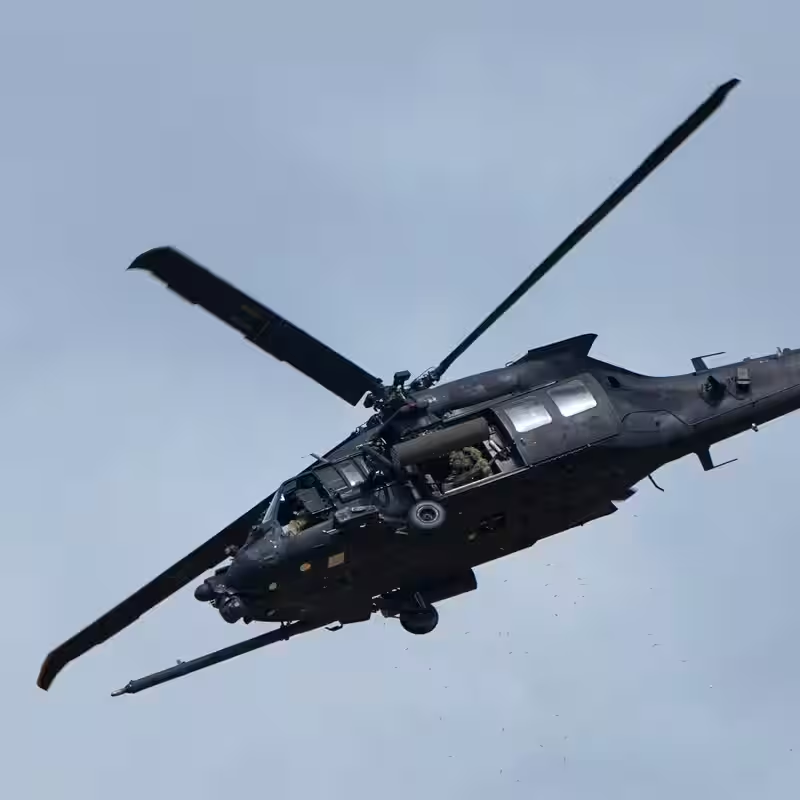In a dramatic escalation of pressure against Nicolás Maduro’s regime, the Trump administration has deployed B-52 bombers and elite Army helicopters near Venezuela’s coastline—signaling a major shift in U.S. military posture in the region.
U.S. Military Flexes Muscle Off Venezuela’s Shore
On Wednesday, two U.S. Air Force B-52 Stratofortress bombers—capable of carrying dozens of precision-guided munitions—flew for hours in international airspace just off Venezuela’s coast. The flight, confirmed by senior U.S. officials, was described as a deliberate “show of force” aimed squarely at Caracas.
Simultaneously, helicopters from the Army’s elite 160th Special Operations Aviation Regiment—the famed “Night Stalkers”—have been conducting training missions over the southern Caribbean Sea, near the coasts of Venezuela and Trinidad and Tobago. Verified social media imagery shows at least six MH-6 Little Bird attack helicopters and three MH-60 Black Hawks operating in the area.

Why Is the U.S. Targeting Venezuela Now?
The Trump administration has intensified its campaign against Maduro, whom it accuses of enabling international drug trafficking and undermining democracy. Since early September 2025, U.S. Special Operations forces have destroyed at least five vessels allegedly smuggling narcotics from Venezuela—killing 27 people in the process.
President Trump has openly acknowledged authorizing covert CIA operations inside Venezuela, with the ultimate goal of forcing Maduro from power. “We’re considering strikes on Venezuelan territory,” Trump said Wednesday.
What Is the 160th Special Operations Aviation Regiment?
Known as the “Night Stalkers,” the 160th SOAR is one of the most secretive and lethal units in the U.S. military. It played critical roles in high-profile missions including the raid that killed Osama bin Laden and countless counterterrorism operations in Iraq, Afghanistan, and Syria.
While officials insist current flights are “training missions,” they also admit the unit’s presence provides President Trump with actionable military options should he decide to escalate further.
U.S. Troop Buildup in the Caribbean: By the Numbers
| Asset | Deployment |
|---|---|
| U.S. Troops | ~10,000 total (majority in Puerto Rico) |
| Marines | 2,200 aboard amphibious assault ships |
| Navy Warships | 8 surface vessels + 1 submarine |
| Air Assets | B-52 bombers, MH-6/MH-60 helicopters |
Is Military Intervention Imminent?
While the Pentagon has declined to comment on “operational matters,” defense analysts warn that the scale and visibility of this buildup go beyond routine deterrence.
“Flying B-52s and deploying Night Stalkers isn’t just posturing—it’s preparing,” said Dr. Elena Ruiz, a Latin America security expert at Georgetown University. “This is the closest the U.S. has come to direct action in Venezuela since the 2019 uprising.”
Still, the administration insists all options remain on the table—and that current actions are meant to pressure Maduro through fear of escalation, not necessarily to trigger war.
Global Reactions and Regional Tensions
Venezuela’s government has condemned the U.S. maneuvers as “acts of aggression” and called for emergency sessions at the United Nations. Meanwhile, neighboring countries like Colombia and Trinidad and Tobago are monitoring the situation closely, wary of spillover violence or refugee flows.
Russia and China, both allies of Maduro, have issued statements urging the U.S. to “refrain from imperialist adventurism.”
What Comes Next?
With covert operations already underway and elite forces positioned within striking distance, the Trump administration appears to be entering a high-stakes endgame with Venezuela. Whether this leads to regime change, a negotiated exit for Maduro, or unintended regional conflict remains uncertain.
One thing is clear: the skies over the Caribbean are no longer quiet.




